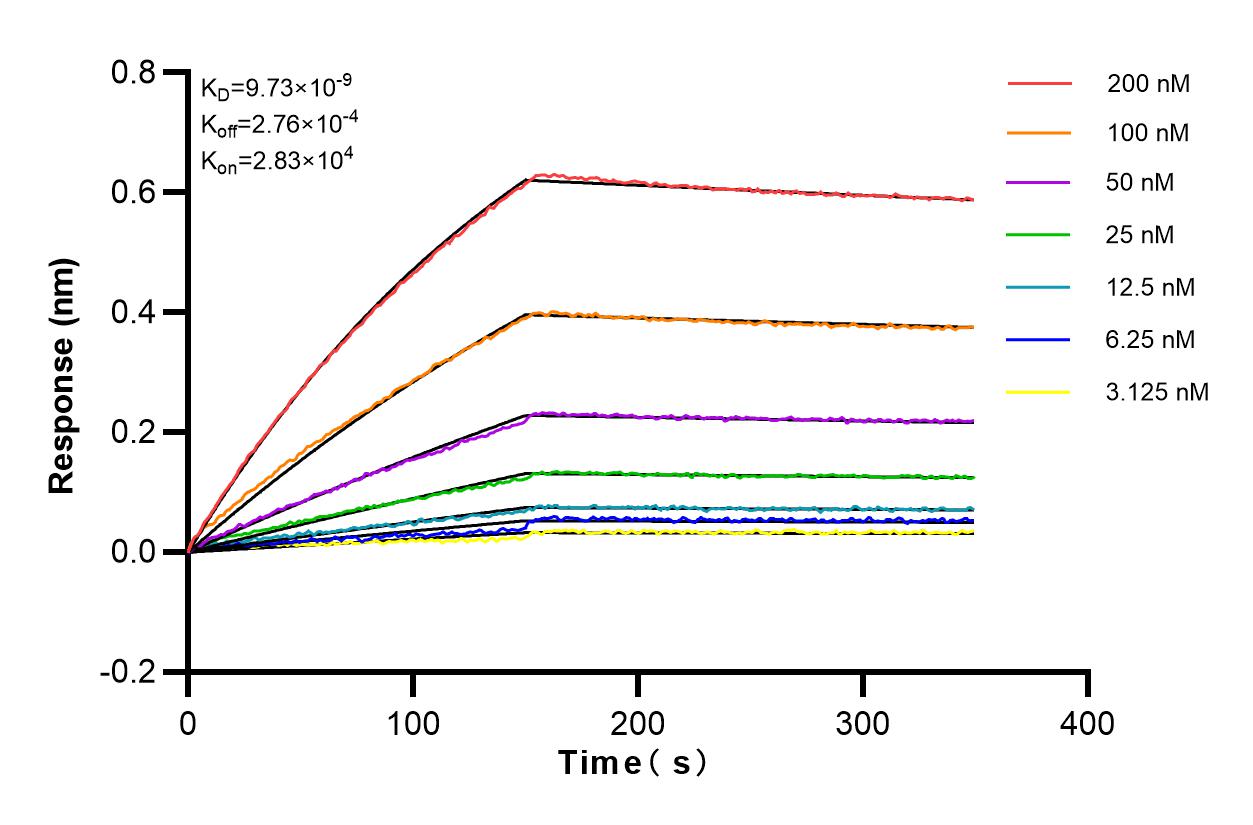STT3A Rekombinanter Antikörper
STT3A Rekombinant Antikörper für ELISA
Wirt / Isotyp
Kaninchen / IgG
Getestete Reaktivität
human
Anwendung
ELISA
Konjugation
Unkonjugiert
CloneNo.
230426B10
Kat-Nr. : 83077-4-RR
Synonyme
Geprüfte Anwendungen
Produktinformation
83077-4-RR bindet in ELISA STT3A und zeigt Reaktivität mit human
| Getestete Reaktivität | human |
| Wirt / Isotyp | Kaninchen / IgG |
| Klonalität | Rekombinant |
| Typ | Antikörper |
| Immunogen | STT3A fusion protein Ag31994 |
| Vollständiger Name | STT3, subunit of the oligosaccharyltransferase complex, homolog A (S. cerevisiae) |
| Berechnetes Molekulargewicht | 705 aa, 81 kDa |
| GenBank-Zugangsnummer | BC020965 |
| Gene symbol | STT3A |
| Gene ID (NCBI) | 3703 |
| Konjugation | Unkonjugiert |
| Form | Liquid |
| Reinigungsmethode | Protein A purfication |
| Lagerungspuffer | PBS with 0.02% sodium azide and 50% glycerol |
| Lagerungsbedingungen | Bei -20°C lagern. Nach dem Versand ein Jahr lang stabil Aliquotieren ist bei -20oC Lagerung nicht notwendig. 20ul Größen enthalten 0,1% BSA. |
Hintergrundinformationen
STT3A, also named as Dolichyl-diphosphooligosaccharide--protein glycosyltransferase subunit STT3A, is a 705 amino acid prtein, which belongs to the STT3 family. STT3A is expressed at high levels in placenta, liver, muscle and pancreas, and at very low levels in brain, lung and kidney. STT3A is a catalytic subunit of the N-oligosaccharyl transferase (OST) complex which catalyzes the transfer of a high mannose oligosaccharide from a lipid-linked oligosaccharide donor to an asparagine residue within an Asn-X-Ser/Thr consensus motif in nascent polypeptide chains. N-glycosylation occurs cotranslationally and the complex associates with the Sec61 complex at the channel-forming translocon complex that mediates protein translocation across the endoplasmic reticulum (ER). SST3A seems to be involved in complex substrate specificity. STT3A is present in the majority of OST complexes and mediates cotranslational N-glycosylation of most sites on target proteins, while STT3B-containing complexes are required for efficient post-translational glycosylation and mediate glycosylation of sites that have been skipped by STT3A.



